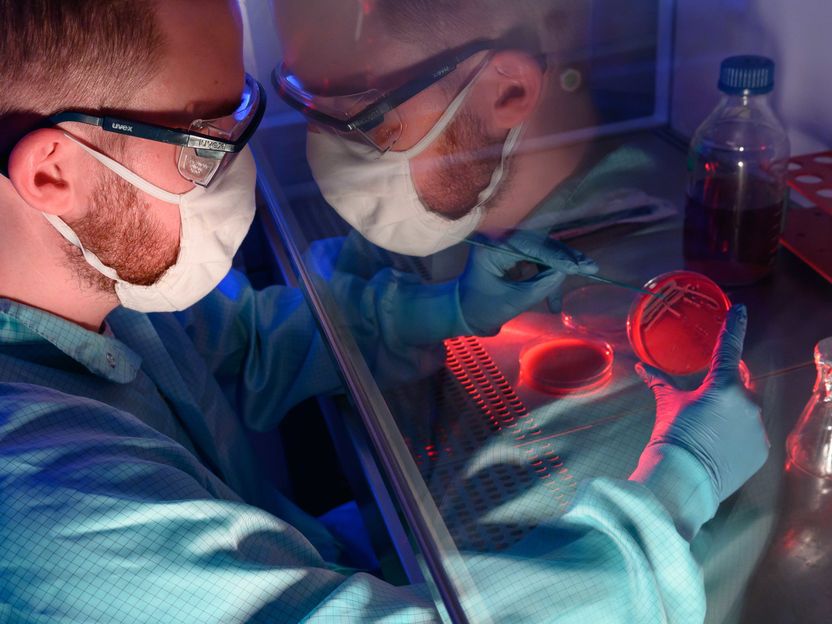Bacterial toxin with healing effectal toxin with healing effect
Toxic substance found in Staphylococcus aureus does not just damage cells, but also stimulates tissue regeneration
Advertisement
Normally they are among the many harmless organisms found in and on the human body: one in four people have millions of Staphylococcus aureus bacteria on their skin and on the mucous membranes of the upper respiratory tract, without being aware of it. In some cases, however, the harmless bacteria can turn into pathogens, which can lead to skin inflammation and lung infections, or – in the worst cases – sepsis. “This happens especially when the bacteria multiply too fast, for example when a person's immune system is weakened by an infection or injury,” says Prof. Oliver Werz of Friedrich Schiller University Jena in Germany.

PhD student Paul Jordan from the University of Jena is preparing bacterial cultures (Staphylococcus aureus).
Jens Meyer/Uni Jena
The Professor for Pharmaceutical Chemistry and his team have studied the molecular defence mechanisms of the human immune system in the fight against such Staphylococcus aureus infections and made a surprising discovery. As the research team reports in today’s issue of the specialist journal “Cell Reports”, the toxic cocktail with which Staphylococcus aureus damages cells and tissues also has positive effects: specific immune cells are stimulated by the bacterial toxin to produce specialised messenger substances that help to reduce inflammation and to promote tissue healing. Prof. Werz expects this hitherto unknown mechanism to be significant for future treatments of skin inflammation and chronic wounds.
Immune cells produce anti-inflammatory messenger substances
In their latest study, the researchers from the University of Jena, Jena University Hospital and the Leibniz Institute on Aging – Fritz Lipmann Institute (FLI), together with colleagues from Harvard Medical School and the University of Naples, have studied in particular the bacterial toxin “α-Hemolysin” and examined its effect on M2 macrophages. M2 macrophages are immune cells which, in the later stages of an inflammatory reaction, ensure that bacteria that have been killed, and damaged cell components, are removed, and that the tissue regenerates. “They are therefore a kind of cellular waste disposal,” says Paul Jordan, doctoral candidate in Werz’s team and lead author of the publication, describing the function of these cells.
The researchers showed that α-hemolysin binds to specific receptor proteins on the surface of M2 macrophages and thus triggers the production of anti-inflammatory messenger substances in the cells, which then cause the inflammation to resolve. In the study, the scientists were also able to show that these transmitters promote tissue regeneration in an animal model. The anti-inflammatory messenger substances include resolvins, maresins and protectins that are formed from omega-3 fatty acids.

























































